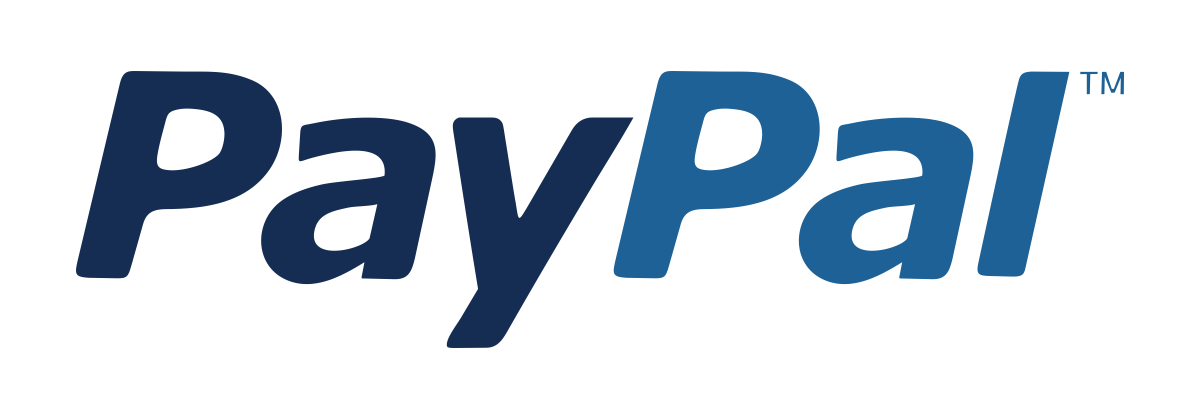Premium Career Track - Chief Executive Officer (CEO)
This program consists of courses that will help you acquire skills to aim for the top job (CEO) position in a reputed organization. Lead your company.Preview Premium Career Track - Chief Executive Officer (CEO) course
Price Match Guarantee Full Lifetime Access Access on any Device Technical Support Secure Checkout Course Completion Certificate 93% Started a new career
BUY THIS COURSE (
93% Started a new career
BUY THIS COURSE (GBP 39 GBP 199 )-
 100% Got a pay increase and promotion
100% Got a pay increase and promotion
Students also bought -
-
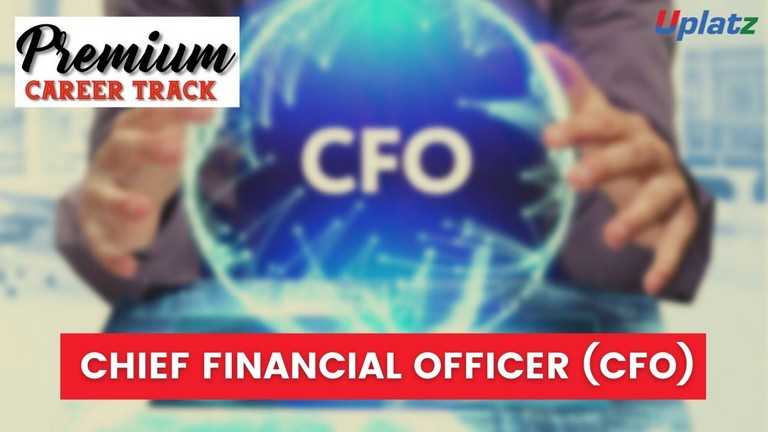
- Premium Career Track - Chief Financial Officer (CFO)
- 600 Hours
- GBP 39
- 3623 Learners
-
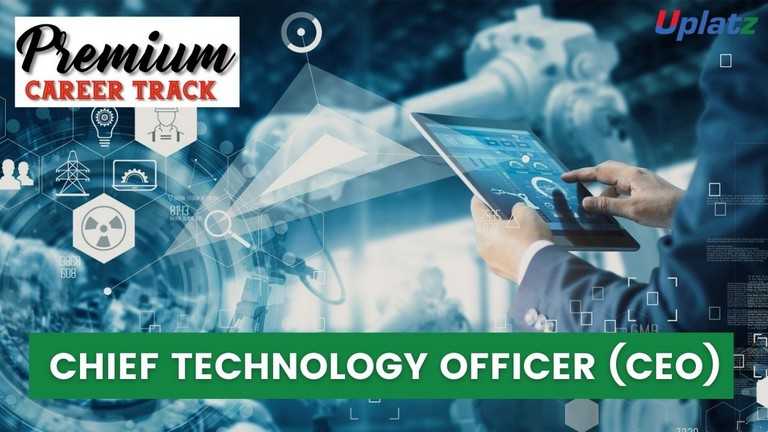
- Premium Career Track - Chief Technology Officer (CTO)
- 1000 Hours
- GBP 39
- 5214 Learners
-
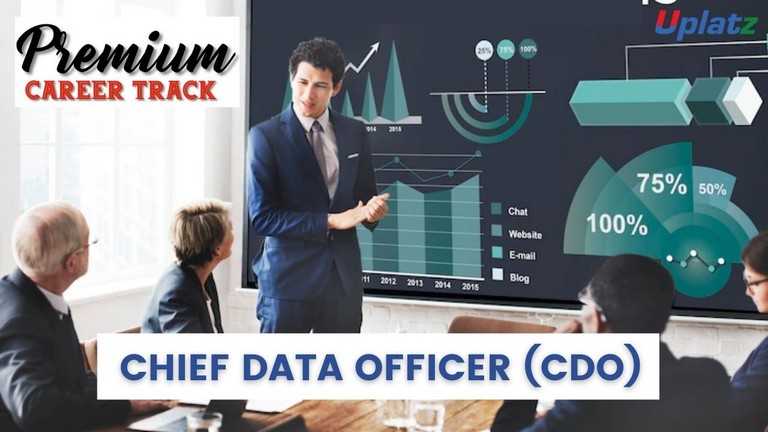
- Premium Career Track - Chief Data Officer (CDO)
- 600 Hours
- GBP 39
- 4405 Learners
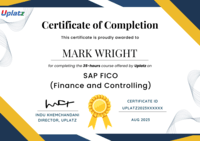
This Premium Career Track - Chief Executive Officer (CEO) program by Uplatz includes the following courses:
1. Leadership and Management
2. Project Management Fundamentals
3. Product Management
4. Fundamentals of Marketing
5. Fundamentals of Digital Marketing
6. Microsoft Project
7. Microsoft Project (basic to advanced)
8. Business Intelligence and Data Analytics
9. Microsoft Excel
10. Google Sheets
The Chief Executive Officer (CEO) is the highest-ranking executive in a company. Also referred to as the Managing Director (MD) or President in some organizations, the CEO is responsible for making major corporate decisions, managing the overall operations of the company, and implementing strategies to achieve the organization's goals and objectives.
The CEO's role involves a wide range of responsibilities, including:
1. Strategic Planning: Developing and executing the company's long-term strategies, vision, and mission.
2. Decision Making: Making critical decisions on behalf of the company, including financial matters, resource allocation, and major investments.
3. Leadership: Providing leadership and direction to the executive team and employees, inspiring and motivating them to achieve company goals.
4. Stakeholder Management: Representing the company to various stakeholders, including shareholders, customers, employees, partners, and the public.
5. Financial Management: Overseeing financial performance, ensuring financial stability, and driving revenue growth and profitability.
6. Risk Management: Identifying and managing risks that may affect the company's operations and performance.
7. Corporate Governance: Ensuring compliance with legal and regulatory requirements, as well as maintaining ethical business practices.
8. Talent Development: Attracting and retaining top talent, as well as fostering a positive corporate culture.
9. External Relations: Building and maintaining relationships with industry peers, government officials, and other key influencers.
10. Performance Evaluation: Monitoring the company's performance and implementing necessary changes to improve overall efficiency and effectiveness.
The CEO typically reports directly to the Board of Directors and works closely with other C-suite executives to ensure alignment and coordination across different functions within the organization. The role of the CEO can vary depending on the company's size, industry, and structure, but ultimately, they are responsible for leading the company toward success and achieving its strategic objectives.
Course/Topic 1 - Leadership and Management - all lectures
-
In this lecture session we learn about honesty and integrity in leadership and management and also talk about some basic terms of leadership and management.
-
In this lecture session we learn about how confidence is a must in leadership and management and also talk about the importance of confidence in leadership and management.
-
In this tutorial we learn about A soft skill is a personal attribute that supports situational awareness and enhances an individual's ability to get a job done. The term soft skills is often used as a synonym for people skills or emotional intelligence.
-
In this lecture session we learn about Soft skills, also called people skills, are the mix of social and interpersonal skills, character traits, and professional attitudes that all jobs require. Teamwork, patience, time management, communication, are just a few examples.
-
In this lecture session we learn that Communication in teams is more than just efficient work. It allows everyone on the team to be educated on any topic that may affect their work. Moreover, it develops trust, builds camaraderie among the team members, boosts morale, and helps employees stay engaged in the workplace.
-
In this lecture session we learn about Effective communication can help to foster a good working relationship between you and your staff, which can in turn improve morale and efficiency.
-
In this lecture session we learn about what commitment Concentration – leadership commitment involves making a personal decision to support the change no matter what. It is incongruous to ask for change in others while failing to exhibit the same level of commitment. Concentration requires maintaining focus throughout the change not just at the beginning.
-
In this lecture session we learn about Market leadership is the position of a company with the largest market share or highest profitability margin in a given market for goods and services. Market share may be measured by either the volume of goods sold or the value of those goods.
-
In this lecture session we learn that Motivational leadership is defined by positivity and vision. Motivational leaders make decisions, set clear goals and provide their teams with the empowerment and tools to achieve success. Motivational leaders evoke and see the best in their employees, inspiring them to work toward a common goal.
-
In this lecture session we learn about A primary task of leadership is to direct attention. To do so, leaders must learn to focus their own attention. When we speak about being focused, we commonly mean thinking about one thing while filtering out distractions.
-
In this tutorial we learn about Marketing analytics helps collect and strengthen data from across all marketing channels. This information is key to improving marketing efforts and driving them forward to achieve business goals.
-
In this lecture session we learn about Marketing automation is the integration of data and processes from other sales and marketing channels into an organized central platform. A comprehensive marketing automation hub complements and organizes the customer journey. It integrates all of a business's channels and outreach within the customer database.
-
In this tutorial we learn about Growth hacking (also known as 'growth marketing') is the use of resource-light and cost-effective digital marketing tactics to help grow and retain an active user base, sell products and gain exposure.
-
In this tutorial we learn about Growth Hacking is a new field focusing solely on growth, based on a data-driven, experiment-based process. A growth hacker explores new growth opportunities systematically in any part of the customer journey, from awareness through marketing to brand ambassadors by optimizing the product.
-
In this lecture session we learn about Product marketing is the process of bringing a product to market. This includes deciding the product's positioning and messaging, launching the product, and ensuring salespeople and customers understand it. Product marketing aims to drive the demand and usage of the product.
-
In this lecture session we learn about the marketing, sales, product, and customer success teams are no longer siloed. They are interwoven in a cohesive experience with the product at the center, and the customer at the center of the product.
-
In this tutorial we learn about how Product marketers know the message and story to convey, who to convey it to, and at what time it needs conveying- but marketing is responsible for turning that knowledge into blog posts, ad copy, and press releases.
-
In this lecture session we learn about PR involves communicating with your market to raise awareness of your business, build and manage your business's reputation and cultivate relationships with consumers. While marketing focuses on promoting actual products and services, public relations focuses on promoting awareness, attitudes and behavior change.
-
In this lecture session we learn about building relationships with the public in order to create a positive public image for a company or organization. It also has different disciplines, such as corporate communications, internal communications, marketing communications, crisis communications.
-
In this lecture session we learn about Public relations helps build an online presence across multiple platforms – social media, earned media, paid media and more. Public relations is important because it involves storytelling. Advertising and marketing can only go so far, and can become bothersome at times, turning consumers away from the product.
-
In this lecture session we learn about Both advertising and PR help build brands and communicate with target audiences. The most basic difference between them is that advertising space is paid while public relations results are earned through providing the media with information in the form of press releases and pitches
Course/Topic 2 - Project Management Fundamentals - all lectures
-
In this first video tutorial on Project Management, you will learn an Introduction to Project Management, its history, benefits, an illustration to Gantt Chart, a view on some of the International standards of practicing Project Management, an overview of what exactly is a project, its relationship with General Project Management practices, Triple Constraints Theory and the role of a Project Manager and its characteristics in Project Management.
-
In this second session of Project Management, you will understand what is Process Oriented Project Management, Project Processes and its categories, what is Project Management and Product Oriented processes and an overview of different process groups and its knowledge areas.
-
In this lecture, you will learn what is a process in Project Management and its different stages in a Project Life cycle, how a process is linked to different process groups. Also, you will learn about the different Knowledge Areas related to a Process in Project Management.
-
In this video, you will learn about the Project Planning Process and Group Processes and the different processes involved in managing the Scope and Scheduled Constraints.
-
In this last session on Project Management Fundamentals, you will learn about the different constraints involved like Cost, Quality, Resources, Risks, etc. in a Process Group and how it helps in managing the entire project in Project Management.
Course/Topic 3 - Product Management - all lectures
-
Lecture 1 - Introduction to Product Management
-
Lecture 2 - Deep-dive into Product Management
Course/Topic 4 - Fundamentals of Marketing - all lectures
-
In this session we will learn about the basic topics of marketing. This video talks about the need – wants – demand and desire concepts in marketing. Further we will learn about the marketing mix and 4ps of marketing – product, price, place, promotion.
-
In this session we will learn about the marketing models. In this vide we will talk about the marketing models – STP (Segmentation, Targeting and Positioning) which is one of the most popular model of marketing. Further we will see what is STP and how does segmentation help.
-
In this session we will talk about the other marketing model i.e., Push and Pull. This video talk about what is push marketing and what is pull marketing. Further we will see the inbound and outbound marketing.
-
In this session we will learn about the marketing model called AIDA – Attention, interest, desire and action. This video explains about the AIDA funnel marketing in further tutorial.
-
In this session we will learn about the SWAT model of marketing. This model is used across business from a long time. This model works on the basis of identifying strengths, weaknesses, opportunities and threats.
-
In this session we will learn about the Golden Circle marketing model. This video talks about the what, how and why of marketing strategies applied by companies.
-
In this session we will learn about the Circle of marketing – marketing model. The circle of marketing model depends upon many factors such as product, support, usability, community, tribe, price, story etc.
Course/Topic 5 - Fundamentals of Digital Marketing - all lectures
-
Here in this lecture we will get a basic introduction on what Digital Marketing really is, various aspects of digital marketing, how digital marketing starts.
-
In this lecture, we deep dive into what are different types of digital marketing channels, pillars of digital marketing, etc.
-
In this session, we will look into what is digital marketing metrics to track success in-depth, its search and traffic, Ad, and revenue.
-
Here we will learn the basics of digital marketing that is a mix of three features - earned, paid, and owned in depth.
Course/Topic 6 - Microsoft Project - all topics
-
Lecture 1 - Getting Started with Microsoft Project
-
Lecture 2 - Backstage
-
Lecture 3 - Modifying Project Information
-
Lecture 4 - Views and Tables
-
Lecture 5 - Preparation
-
Lecture 6 - Tasks
-
Lecture 7 - Task Notes
-
Lecture 8 - Work Resources
-
Lecture 9 - Material and Cost Resources
-
10 - Calendar Work Resource
Course/Topic 7 - Microsoft Project (basic to advanced) - all lectures
-
Lecture 1 - Overview of Microsoft Project
-
Lecture 2 - The Stage
-
Lecture 3 - The Back Stage
-
Lecture 4 - Views and Tables in MSP
-
Lecture 5 - Project Initiation - part 1
-
Lecture 6 - Project Initiation - part 2
-
Lecture 7 - Tasks and Milestones
-
Lecture 8 - Linking Tasks
-
Lecture 9 - More on Linking Tasks
-
Lecture 10 - Creating Resources
-
Lecture 11 - Creating Resources - advanced
-
Lecture 12 - Assigning Resources
-
Lecture 13 - Applying Cost Tables
-
Lecture 14 - Units Work Duration
-
Lecture 15 - Handy Features - revised
-
Lecture 16 - Critical Path Identification
-
Lecture 17 - Resource Leveling
-
Lecture 18 - Baselining
-
Lecture 19 - Updating Project - part 1
-
Lecture 20 - Updating Project - part 2
-
Lecture 21 - Updating Project - part 3
-
Lecture 22 - Monitoring
-
Lecture 23 - Controlling - part 1
-
Lecture 24 - Controlling - part 2
-
Lecture 25 - Reports Pack
-
Lecture 26 - Support EVM
Course/Topic 8 - Business Intelligence and Data Analytics - all lectures
-
In this lecture session we discuss about Bi concepts, examples and application of business intelligence and data analytics and also cover other concepts of BI.
-
In this lecture session we learn about basic concepts of BI and also cover factors of business intelligence in brief.
-
In this lecture session we learn about data warehouse data access and data dashboarding and also cover presentation in BI.
-
In this lecture session we learn about product database, advertise database and customer demographic database and also cover data analyst concepts.
-
In this lecture session we learn about basic introduction of business intelligence and also cover factors of business intelligence in brief.
-
In this lecture session we learn about introduction of predictive modeling and also cover functions of predictive modeling in brief.
-
In this lecture session we learn about data related to customer services and also talk about customer relation databases in brief.
-
In this lecture session we learn about introduction of NoSQL and also cover basic functions of NoSQL in business intelligence.
-
In this lecture session we learn about graph stores and also talk about the advantages and disadvantages of graph stores in BI.
-
In this lecture session we learn about hierarchical clustering in business intelligence and also talk about clustering factors in BI.
-
In this lecture session we learn about introduction of salesforce in business intelligence and also talk about some basic uses of salesforce.
-
In this lecture session we learn about introduction to NLP and also cover what is natural language processing in artificial intelligence.
-
In this lecture session we learn about natural language processing speech to text conversion and also cover the importance of natural language processing.
-
In this lecture session we learn about introduction of apache server in business intelligence and also talk about basics of apache server.
-
In this lecture session we learn about deep drive into business intelligence and also talk about factors or deep drive in business intelligence.
-
In this lecture session we learn about data warehousing in business intelligence and data analytics and also talk about factors and features of data warehousing.
-
In this lecture session we learn about types of data in business intelligence and also talk about different types of data in BI.
-
In this lecture session we learn about mobile BI and also talk about open source BI software replacing vendor offering.
-
In this lecture session we learn about real time BI in business intelligence and also talk about factors of real time BI in brief.
-
In this lecture session we learn about data analytics comprehensively and also talk about functions of data analytics.
-
In this lecture session we talk about data analytics vs business analytics and also talk about the importance of data analytics.
-
In this lecture session we learn about Embedded analytics and also talk about functions of Embedded analytics in data analytics.
-
In this lecture session we learn about collection analytics and also cover the importance of collection analytics.
-
In this lecture session we learn about survival analytics and also cover duration analytics in brief.
-
In this lecture session we learn about machine learning techniques and also cover the importance and factors of machine learning techniques in business intelligence.
-
In this lecture session we learn about geospatial predictive analytics and also talk about functions of geospatial predictive analytics in business intelligence.
-
In this lecture session we learn about cohort analysis in data analyst and we also cover functions and importance of cohort analysis.
-
In this lecture session we learn about data mining in business intelligence and also talk about data mining functions and why we need data mining in business intelligence.
-
In these lecture sessions we learn about anomaly detection and also talk about functions of anomaly detection in brief.
-
In these lecture sessions we learn about statistically sound association and also talk about factors of statistically sound association in business intelligence.
-
In this lecture session we learn about cluster analysis. We’ll cover all types of cluster analysis in brief and also cover the importance of cluster analysis in business analysis.
-
In this lecture session we learn about DBSCAN in business intelligence and also talk about DBSCAN functions and importance.
-
In this lecture session we learn about regression models in business intelligence and also talk about the function of regression models.
-
In this lecture session we learn about extraction based summarization in business intelligence and also cover all types of summarization in data analyst.
-
In this lecture session we learn about machine learning in BI and also talk about factors and importance of machine learning in brief.
-
In this lecture session we learn about machine learning vs BI we also discuss the basic difference between machine learning and business intelligence.
-
In this lecture session we learn about how ml can make BI better and also talk about ml basic functions.
-
In this lecture session we learn about data warehousing and also talk about how we manage data warehousing in business intelligence.
-
In this lecture session we learn about data warehousing in business intelligence and data analytics and also talk about factors and features of data warehousing.
-
In this lecture session we learn about data mart in business intelligence and also talk about data mart function.
-
In this lecture session we learn about data dimensions in business intelligence and also cover all types of data dimension in BI.
-
In this lecture session we learn about data dimension in business intelligence and also cover functions and importance of data dimension.
-
In this lecture session we learn about data vault modeling in business intelligence and also cover different types of vault modeling in brief.
-
In this lecture session we learn about links and satellites and also cover the importance and factors of links and satellites in business intelligence.
Course/Topic 9 - Microsoft Excel - all lectures
-
Lecture 1 - Introduction to Microsoft Excel
-
Lecture 2 - Key in Data
-
Lecture 3 - Font and Alignment
-
Lecture 4 - Cut Paste and Format Painter
-
Lecture 5 - Control plus Keys
-
Lecture 6 - Home Commands and Clipboard
-
Lecture 7 - File Tab
-
Lecture 8 - Sorting and Filtering
-
Lecture 9.1 - Basic Formulas
-
Lecture 9.2 - Text Formulas
-
Lecture 10.1 - VLookup - part 1
-
Lecture 10.2 - VLookup - part 2
-
Lecture 10.3 - HLookup
-
Lecture 10.4 - This is a bonus session on Vlookup from a different tutor
-
Lecture 10.5 - This is a bonus session on Vlookup from a different tutor
-
Lecture 11.1 - Pivot Tables - part 1
-
Lecture 11.2 - Pivot Tables - part 2
-
Lecture 11.3 - Pivot Tables - part 3
-
Lecture 11.4 - Pivot Tables - part 4
-
Lecture 12.1 - Charts - part 1
-
Lecture 12.2 - Charts - part 2
-
Lecture 12.3 - Column Charts
-
Lecture 12.4 - Bar Charts
-
Lecture 12.5 - Line Charts
Course/Topic 10 - Google Sheets course - all lectures
-
Lesson 1 - Introduction to Google Sheets
-
Lesson 2 - Menu Options - File
-
Lesson 3 - Menu Options - Edit
-
Lesson 4 - Menu Options - View
-
Lesson 5 - Menu Options - Insert
-
Lesson 6 - Menu Options - Format
-
Lesson 7 - Menu Options - Data and more
-
Lesson 8 - Entering Data and Editing
-
Lesson 9 - Functions - Numeric Function
-
Lesson 10 - Functions - Text Function
-
Lesson 11 - Functions - Date Functions
-
Lesson 12 - Charts and Conditional Formatting
-
Lesson 13 - Pivot Tables
-
Lesson 14 - Saving - Sharing
•Learn about Leadership and Management
•Learn Leadership Skills
•Learn Soft Skills
•Leadership and Management
•Learn about Business Communication Skills and Teamwork
•Learn Business Intelligence and Data Analytics
•Learn about Predictive Modeling
The Chief Executive Officer (CEO) Certification ensures you know planning, production and measurement techniques needed to stand out from the competition.
A chief executive officer, chief administrator officer, central executive officer, or just chief executive, is one of a number of corporate executives in charge of managing an organization – especially an independent legal entity such as a company or nonprofit institution.
CEOs are responsible for managing a company's overall operations. This may include delegating and directing agendas, driving profitability, managing company organizational structure, strategy, and communicating with the board.
CEO is answerable to the Board of Directors and works under their authority. On the other hand, an executive director is an authority that monitors the functioning of the Board of Directors.
Full Certification comes with the right to be called a Certified CEO and use the post nominal CCEO. Provisional Certified CEO Certification for Senior Executives with 3+ years' senior management experience.
Uplatz online training guarantees the participants to successfully go through the Chief Executive Officer (CEO) Certification provided by Uplatz. Uplatz provides appropriate teaching and expertise training to equip the participants for implementing the learnt concepts in an organization.
Course Completion Certificate will be awarded by Uplatz upon successful completion of the Chief Executive Officer (CEO) online course.
The Chief Executive Officer (CEO) draws an average salary of $250,000 per year depending on their knowledge and hands-on experience.
A CEO, which stands for Chief Executive Officer, is the highest-ranking individual in a company. Corporations are allowed to enter or organization. The CEO is responsible for the overall success of a business entity or other organization and for making top-level managerial decisions.
To become a chief executive officer, you must have a degree or professional credentials in accounting, law, accountancy or public administration. Students are required to demonstrate applicable business expertise in these fields, including managing, accounting, credit administration.
CEOs are responsible for managing a company's overall operations. This may include delegating and directing agendas, driving profitability, managing company organizational structure, strategy, and communicating with the board.
Note that salaries are generally higher at large companies rather than small ones. Your salary will also differ based on the market you work in.
Sr. Chief Executive Officer
Jr. Chief Executive Officer
Below are commonly asked interview questions along with sample answers for a Chief Executive Officer (CEO) interview:
1. Can you describe your experience as a CEO and the key achievements you have had in previous roles?
As a CEO, I have led two successful companies through significant growth and expansion. At Company A, I increased revenue by 30% within two years, and at Company B, I successfully navigated the company through a challenging market and achieved a 15% increase in market share.
2. How do you approach strategic planning and decision-making as a CEO?
I believe in data-driven decision-making and collaborative strategic planning. I closely analyze market trends, customer needs, and competitor activities to inform our long-term strategies.
3. How do you prioritize tasks and manage your time effectively as a CEO?
Time management is crucial. I prioritize tasks based on their impact on our business goals and allocate time accordingly. I also delegate responsibilities to competent team members to ensure efficient execution.
4. How do you foster a positive corporate culture and lead by example?
I believe in leading by example and maintaining an open-door policy. I encourage a culture of transparency, innovation, and teamwork to inspire employees to perform at their best.
5. Can you discuss your approach to risk management and how you handle potential challenges in the business environment?
I approach risk management with a proactive mindset. I regularly assess potential risks and implement contingency plans to mitigate their impact. I believe in adapting swiftly to challenges and turning them into opportunities.
6. How do you maintain a customer-centric approach as a CEO?
Customer satisfaction is a top priority for me. I actively engage with customers through surveys and feedback sessions to understand their needs and ensure our products and services meet their expectations.
7. Can you share a situation where you successfully led a company through a major organizational change or restructuring?
At my previous company, I led a successful merger with a competitor, which required careful integration of operations and teams. The merger resulted in enhanced market competitiveness and increased efficiency.
8. How do you approach building and maintaining strong relationships with shareholders and investors?
I prioritize transparent communication and provide regular updates on company performance and strategic initiatives. I believe in building trust with shareholders through open and honest dialogue.
9. How do you foster innovation within the organization to drive business growth?
I encourage a culture of innovation by rewarding creative ideas and providing resources for research and development. I also promote cross-functional collaboration to harness diverse perspectives.
10. Can you share an example of a difficult decision you had to make as a CEO? How did you handle it?
At a previous company, I had to make the tough decision to downsize the workforce during a challenging economic period. I approached it with empathy, providing support and resources for affected employees while ensuring the company's long-term viability.
11. How do you approach diversity and inclusion in the workplace?
Diversity and inclusion are essential for a thriving organization. I prioritize creating an inclusive environment where diverse perspectives are valued, and equal opportunities are provided to all employees.
12. Can you discuss your experience in managing financial performance and budgets as a CEO?
I have a strong financial acumen and work closely with the CFO to set financial targets and monitor performance. I believe in prudent financial management and making strategic investments to drive growth.
13. How do you communicate the company's vision and goals to employees and ensure alignment?
I believe in clear and consistent communication. I regularly hold town hall meetings, send company-wide updates, and engage in one-on-one conversations with employees to ensure alignment with our vision.
14. How do you handle public relations and media interactions as a CEO?
I believe in proactive public relations. I maintain open communication with the media and engage in positive press opportunities to showcase our company's achievements and initiatives.
15. Can you share an example of a successful product launch you oversaw as a CEO?
In my previous role, we launched a new product that addressed a gap in the market. We executed a comprehensive marketing campaign and achieved record sales during the launch period.
16. How do you approach crisis management and maintain stakeholder confidence during challenging times?
During crises, I prioritize transparency and swift action. I provide regular updates to stakeholders and communicate our mitigation efforts to maintain their confidence in the company.
17. How do you ensure regulatory compliance and ethical business practices as a CEO?
I emphasize compliance and ethics across the organization. I ensure that we have robust policies and procedures in place to adhere to all relevant laws and regulations.
18. Can you discuss your experience in driving employee engagement and reducing turnover rates?
I believe in investing in employee development and recognition programs. By providing growth opportunities and acknowledging employees' contributions, we can boost engagement and reduce turnover.
19. How do you approach market expansion and international growth opportunities?
I prioritize market research and collaboration with local experts to understand the nuances of international markets. We develop localized strategies to enter new markets successfully.
20. Can you share an example of how you effectively led a cross-functional team to achieve a specific goal?
At my previous company, I led a cross-functional team to launch a complex project on time and within budget. By fostering collaboration and clear communication, we achieved exceptional results.
21. How do you approach talent acquisition and ensure the company attracts top talent?
Talent acquisition is critical to our success. I focus on employer branding, networking, and creating an appealing work culture to attract the best candidates.
22. Can you discuss your experience in implementing sustainability initiatives and corporate social responsibility (CSR) programs?
I believe in being socially responsible and implementing sustainable practices. We have established CSR programs that align with our values and positively impact our communities.
23. How do you approach conflict resolution within the organization?
I address conflicts proactively and encourage open communication. By understanding the root causes of conflicts, we can find solutions that benefit everyone involved.
24. Can you share an example of a situation where you had to pivot the company's strategy due to unexpected market changes?
During a market disruption, I led the company to reassess our strategy and pivot towards new opportunities. We adapted quickly, resulting in increased market share and revenue.
25. How do you ensure alignment between the company's short-term goals and its long-term vision?
I believe in setting clear objectives that contribute to our long-term vision. Regular performance reviews and progress tracking help ensure alignment at all levels.
26. Can you discuss your experience in driving customer retention and repeat business?
Customer retention is crucial for sustainable growth. I prioritize customer satisfaction, implement loyalty programs, and foster long-term relationships with our clients.
27. How do you approach succession planning and talent development within the organization?
Succession planning is vital to the company's continuity. I identify high-potential employees and invest in their development to prepare them for future leadership roles.
28. Can you share a situation where you effectively negotiated a major business deal or partnership?
In a past role, I negotiated a strategic partnership that resulted in increased market reach and new revenue streams for the company.
29. How do you stay resilient and maintain a positive mindset during challenging times as a CEO?
Resilience is essential in leadership. I maintain a positive outlook by focusing on solutions, surrounding myself with a strong support network, and taking care of my well-being.
30. Can you discuss your experience in managing organizational change and overcoming resistance to change?
Change management requires a thoughtful approach. I communicate the benefits of change, address concerns, and involve employees in the process to reduce resistance.
31. How do you approach cost optimization and efficiency improvement within the organization?
I prioritize continuous improvement and regularly assess operational processes to identify areas for cost optimization and efficiency gains.
32. Can you share a situation where you effectively leveraged technology to streamline business operations?
At my previous company, we implemented an enterprise resource planning (ERP) system that improved operational efficiency and data visibility across the organization.
33. How do you balance short-term financial goals with the long-term sustainability of the company?
Striking the right balance is essential. I prioritize strategic investments that drive long-term growth while managing short-term financial performance.
34. Can you discuss your experience in handling conflicts of interest and maintaining corporate governance standards?
I adhere to the highest ethical standards and promote a culture of integrity and transparency. I ensure that all decisions align with corporate governance guidelines.
35. How do you approach customer feedback and use it to drive product/service improvements?
Customer feedback is invaluable. I actively seek customer input through surveys and customer support channels, and we use their suggestions to enhance our offerings.
36. Can you share a situation where you successfully turned around a struggling business or division?
At a previous company, I led a turnaround strategy that included restructuring, cost-cutting, and a renewed focus on innovation. This resulted in significant financial improvement and market recovery.
37. How do you approach board relations and ensure effective collaboration with the board of directors?
I maintain open communication with the board and provide regular updates on company performance and strategic initiatives. I also seek their input and value their guidance.
38. Can you discuss your experience in managing mergers and acquisitions (M&A) and integrating acquired companies successfully?
I have led several M&A transactions, and successful integration is essential for the success of the deal. I prioritize cultural alignment and seamless integration of operations.
39. How do you approach continuous learning and personal development as a CEO?
Continuous learning is crucial in leadership. I attend industry conferences, participate in executive education programs, and read extensively to stay updated and sharpen my skills.
40. Can you share an example of a situation where you had to make a difficult ethical decision as a CEO?
In a past role, I faced a situation where our company was offered an unethical business opportunity. I chose to decline the offer to uphold our values and maintain our reputation.
41. How do you approach crisis communication and maintaining stakeholder trust during challenging times?
During crises, I prioritize transparent communication and proactive measures to address concerns. Open dialogue with stakeholders helps maintain their trust in the company.
42. Can you discuss your experience in building a strong leadership team and developing future leaders within the organization?
Building a strong leadership team is essential for sustainable growth. I prioritize leadership development programs and provide mentoring opportunities to groom future leaders.
43. How do you approach employee performance evaluations and provide constructive feedback?
Employee feedback is crucial for growth. I conduct regular performance evaluations, provide constructive feedback, and work with employees to create actionable development plans.
44. Can you share a situation where you led a successful market entry strategy into a new geographic region?
In a previous role, I led the successful expansion into a new international market through market research, strategic partnerships, and localized marketing campaigns.
45. How do you approach negotiation with key stakeholders, such as suppliers, customers, and partners?
I approach negotiations with a win-win mindset. I seek to understand the interests of all parties and strive to find mutually beneficial solutions.
46. Can you discuss your experience in building a strong company brand and reputation?
Building a strong brand requires consistency and authenticity. I prioritize brand messaging and ensure that every interaction with the company reflects our values and mission.
47. How do you approach talent retention and career development to foster employee loyalty?
Talent retention is a priority. I focus on providing growth opportunities, recognizing achievements, and creating a supportive work environment that fosters employee loyalty.
48. Can you share a situation where you had to lead the company through a major crisis or disruption?
During a previous economic downturn, I led the company through a comprehensive crisis management plan that included cost reduction measures and diversification of revenue streams.
49. How do you approach market research and customer segmentation to inform marketing strategies?
Market research and customer segmentation are vital for targeted marketing. I use data analysis to identify customer needs and preferences, which inform our marketing campaigns.
50. Can you discuss your experience in building strategic partnerships and collaborations to drive business growth?
Strategic partnerships are key to expanding our market reach. I prioritize identifying partners with complementary offerings and aligning our strategies for mutual success.
Note: The provided responses are sample answers and should be tailored to the individual's specific experiences and accomplishments. Additionally, in a real interview, candidates are encouraged to be concise, confident, and provide concrete examples to support their responses.







